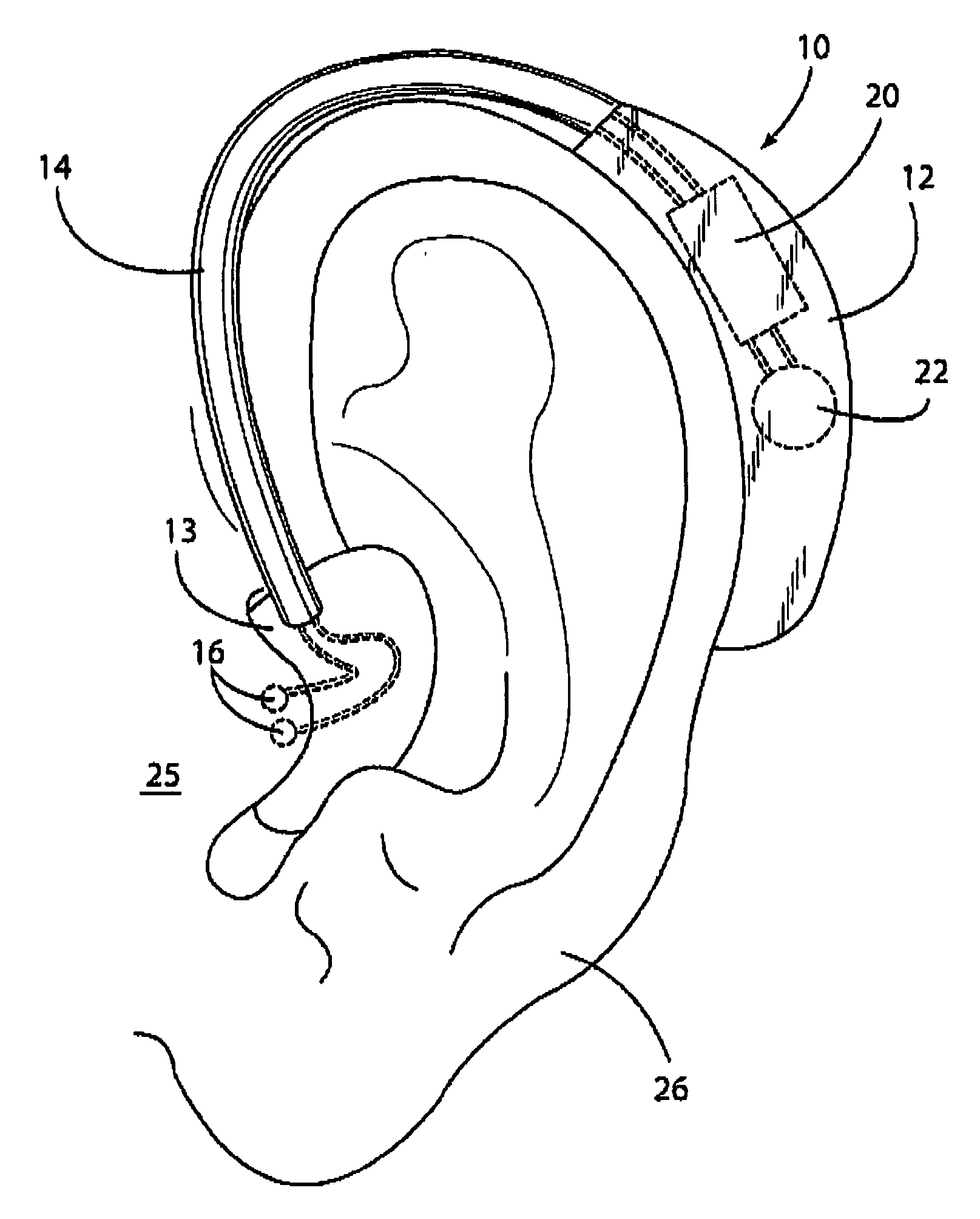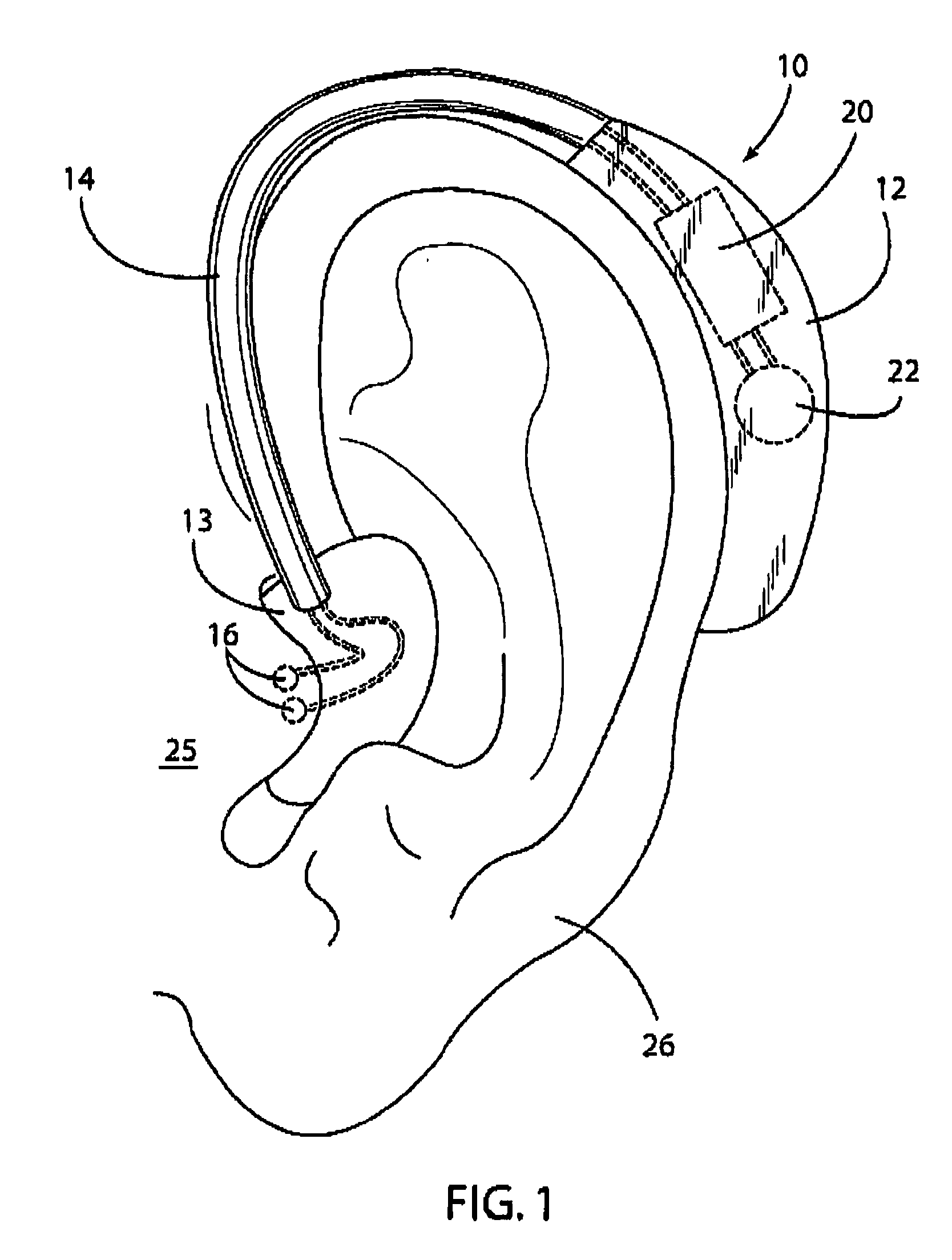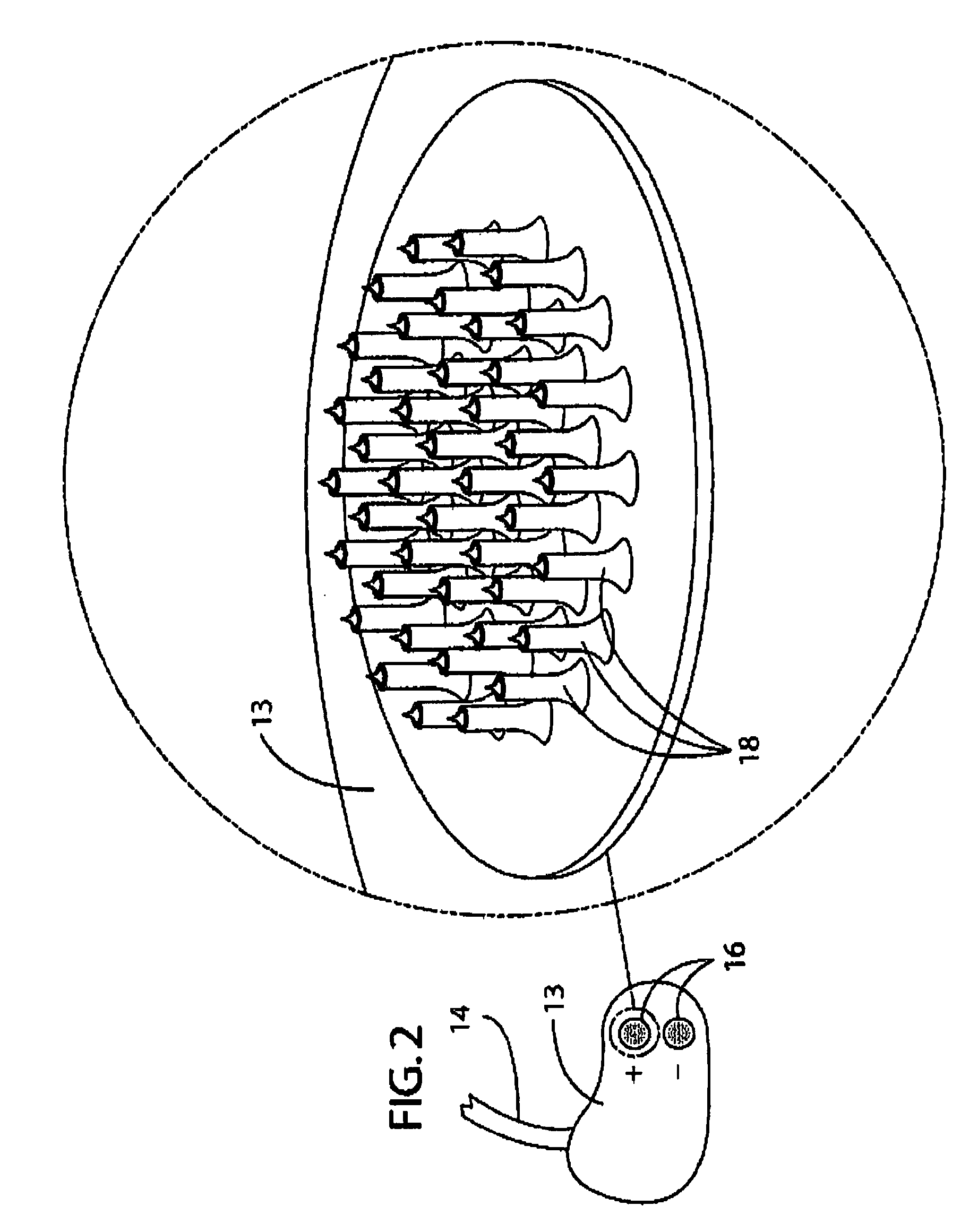Non-invasive device and method for electrical stimulation of neural tissue
a neural tissue and non-invasive technology, applied in the direction of internal electrodes, skin piercing electrodes, therapy, etc., can solve the problems of limiting the therapeutic effect of implantable devices, trauma to the body and cost, and obvious limitations of implantable devices, so as to enhance brain function, improve the effect of quality and low cos
- Summary
- Abstract
- Description
- Claims
- Application Information
AI Technical Summary
Benefits of technology
Problems solved by technology
Method used
Image
Examples
Embodiment Construction
[0014] It will be apparent to those skilled in the art, that is, to those who have knowledge or experience in this area of technology, that many uses and design variations are possible for the device for stimulating neural tissue disclosed herein. The following detailed discussion of various alternative and preferred features and embodiments will illustrate the general principles of the invention with reference to a non-invasive device for stimulating neural tissue mounted in a manner similar to an ear piece. Other embodiments suitable for other applications will be apparent to those skilled in the art given the benefit of this disclosure.
[0015] Referring now to the drawings, in FIG. 1 shows a neural stimulation device 10 in accordance with a preferred embodiment. A pair of electrodes 16 is positioned in a housing 13, positioned in an ear of a patient. The housing may preferably be shaped much like an earpiece. The electrodes 16 are electrically connected via connector 14 to a behi...
PUM
 Login to View More
Login to View More Abstract
Description
Claims
Application Information
 Login to View More
Login to View More - R&D
- Intellectual Property
- Life Sciences
- Materials
- Tech Scout
- Unparalleled Data Quality
- Higher Quality Content
- 60% Fewer Hallucinations
Browse by: Latest US Patents, China's latest patents, Technical Efficacy Thesaurus, Application Domain, Technology Topic, Popular Technical Reports.
© 2025 PatSnap. All rights reserved.Legal|Privacy policy|Modern Slavery Act Transparency Statement|Sitemap|About US| Contact US: help@patsnap.com



